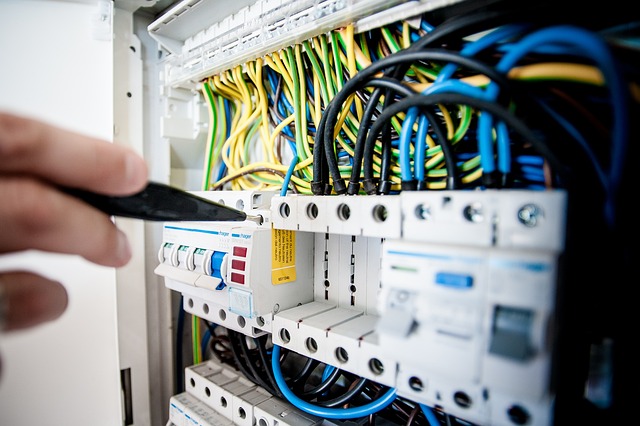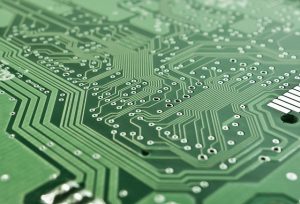The OneWheel electric board showcases self-balancing technology, using sensors, gyroscopes, and algorithms to maintain stability without rider input. This innovative design allows for dynamic equilibrium adjustments, making it efficient and safe for urban transportation. Advanced features enable smooth direction changes, tight turns, and enhanced control, promoting physical fitness while reducing environmental impact. Despite challenges in stability, safety, and efficiency at higher speeds, ongoing research focuses on improving sensor technology, motor efficiency, and integrating AI for personalized experiences. Beyond transport, self-balancing tech has transformed industries like warehousing, construction, and healthcare. However, environmental concerns necessitate the adoption of eco-friendly materials, modular designs, and effective recycling programs to balance technological advancement with sustainability.
Self-balancing technology has emerged as a revolutionary force in personal mobility, with OneWheel electric boards at its forefront. This innovative system enables users to navigate through various terrains with ease, offering a unique blend of efficiency and control. By understanding the core concept and key components that underpin this technology, we can appreciate its profound impact on urban transportation. From enhancing safety to exploring environmental sustainability, self-balancing systems are transforming the way we move, promising a future of dynamic and eco-friendly mobility solutions, with OneWheel electric boards leading the charge.
Unveiling Self-Balancing Technology: The Core Concept

Self-balancing technology, at its core, revolves around the innovative concept of keeping a vehicle upright and stable without human intervention. This revolutionary idea has paved the way for exciting developments in personal transportation, with one of the most notable examples being the OneWheel electric board. By utilizing advanced sensors, gyroscopes, and complex algorithms, these boards maintain their balance while the rider steers and controls speed.
The core concept behind self-balancing technology is to create a dynamic equilibrium, where the vehicle’s center of gravity shifts in real-time to counteract any lean or tilt. This is achieved through motors that adjust their power output based on sensor feedback, ensuring the board stays upright as the rider moves. The OneWheel electric board, with its sleek and compact design, offers an eco-friendly and efficient way to navigate urban areas, all while providing a unique and thrilling riding experience.
How OneWheel Electric Boards Utilize This Innovation

OneWheel electric boards are a prime example of how self-balancing technology enhances mobility. These innovative devices leverage advanced sensors and algorithms to maintain stability, allowing riders to focus on steering and navigation rather than balancing. The board adjusts its center of gravity in real-time, ensuring it stays upright even when navigating uneven terrain or sudden movements.
By utilizing this self-balancing innovation, OneWheel electric boards offer a unique blend of speed, agility, and control. Riders can effortlessly transition from forward to backward motion and perform tight turns with ease. This technology not only enhances the overall riding experience but also contributes to safety by reducing the risk of loss of control, making it an appealing option for urban commuting and recreational activities alike.
Key Components in Achieving Stability

Achieving stability in self-balancing technologies, like the OneWheel electric board, relies on several key components working in harmony. At the core, sensors play a vital role by constantly detecting and measuring the rider’s position and movement, enabling the board to adjust its balance accordingly. These sensors provide real-time data, ensuring the board remains stable even at high speeds or during sudden movements.
Actuators, another critical element, are responsible for making adjustments to the board’s wheels and motor. By manipulating torque distribution and wheel speed, actuators help maintain stability by counteracting any instability detected by the sensors. This dynamic balance allows riders to navigate twists, turns, and uneven terrain with ease, making self-balancing technology both versatile and safe.
Benefits of Self-Balancing Systems for Personal Mobility

Self-balancing systems, such as the OneWheel electric board, offer a unique and innovative approach to personal mobility. These advanced technologies provide numerous advantages for individuals seeking efficient and eco-friendly transportation solutions. One of the key benefits is their ability to enhance maneuverability in tight spaces, making them ideal for navigating through crowded urban environments or narrow paths. The self-balancing mechanism allows users to simply lean forward or backward, providing a seamless and intuitive control experience.
Moreover, OneWheel electric boards promote physical fitness by encouraging an active lifestyle. Riders engage their core muscles and maintain balance while cruising, contributing to improved balance, coordination, and overall well-being. This technology also reduces environmental impact due to its energy efficiency and lack of emissions, making it a sustainable choice for daily commuting or recreational activities.
Safety Measures and Risk Mitigation

Self-balancing technology, as seen in devices like the OneWheel electric board, comes with its fair share of safety concerns. To mitigate these risks, manufacturers have implemented several safety measures. First and foremost, these boards typically feature advanced balancing algorithms that adjust in real time to ensure stability and prevent falls. Additionally, they often incorporate speed and motion sensors to detect potential hazards, allowing for immediate adjustments to keep the rider secure.
Another crucial aspect is the design of the equipment itself. OneWheel electric boards are designed with safety features like automatic shut-off mechanisms that kick in when the board detects an unstable situation or if it’s left idle for too long. Moreover, their robust construction and high-quality components ensure durability, reducing the likelihood of mechanical failures. Safety gear, such as helmets and knee pads, is also recommended for riders to further minimize potential injuries.
Challenges and Future Improvements in Self-Balancing Tech

Despite its remarkable progress, self-balancing technology faces several challenges that require attention for future improvements. One major hurdle is ensuring stability and safety, especially at higher speeds and in dynamic environments. The intricate algorithms and sensors must continuously adapt to changing conditions, from uneven terrain to sudden obstacles, to maintain balance. This necessitates advancements in sensor technology and sophisticated control systems that can react faster and more accurately.
Another area of focus is extending the range and improving the efficiency of self-balancing devices like the OneWheel electric board. Researchers are exploring lightweight materials, energy-efficient motors, and innovative power management systems to enhance mobility and reduce battery drain. Moreover, integrating advanced connectivity features and AI could enable these devices to learn from user behavior, optimize performance, and offer personalized experiences in the future.
Real-World Applications: Beyond Just Transportation

Self-balancing technology, popularized by innovative devices like the OneWheel electric board, has transformed not only transportation but also various real-world applications. Beyond just personal mobility, this technology is now integrated into industrial settings for tasks requiring precise balance and control. For instance, self-balancing robots are being used in warehouses for efficient material handling, navigating tight spaces with ease.
In the realm of healthcare, self-balancing devices assist in physical therapy and rehabilitation, providing stable platforms that help patients regain their balance and coordination. Moreover, these technologies are finding use in construction sites for advanced welding and painting tasks, where a steady hand is crucial. The versatility of self-balancing technology promises to revolutionize numerous sectors, offering solutions that enhance efficiency, safety, and accessibility.
Exploring the Environmental Impact and Sustainability

The rise of self-balancing technologies, such as the OneWheel electric board, has sparked interest in their environmental implications. These innovative devices offer a unique form of transportation, but their ecological footprint is a growing area of concern. The production process for these high-tech gadgets often involves rare materials and complex manufacturing methods, raising questions about sustainability. Every component, from motors to batteries, contributes to the overall environmental impact, especially considering the limited lifespans of many electric vehicles.
Looking ahead, the industry must address these challenges to ensure a greener future. OneWheel developers could explore more eco-friendly materials for production and prioritize modular designs that enhance repairability and reduce waste. Additionally, investing in recycling programs for old devices and batteries is crucial. By embracing sustainable practices, the OneWheel community can enjoy this exciting technology while minimizing its environmental impact.
